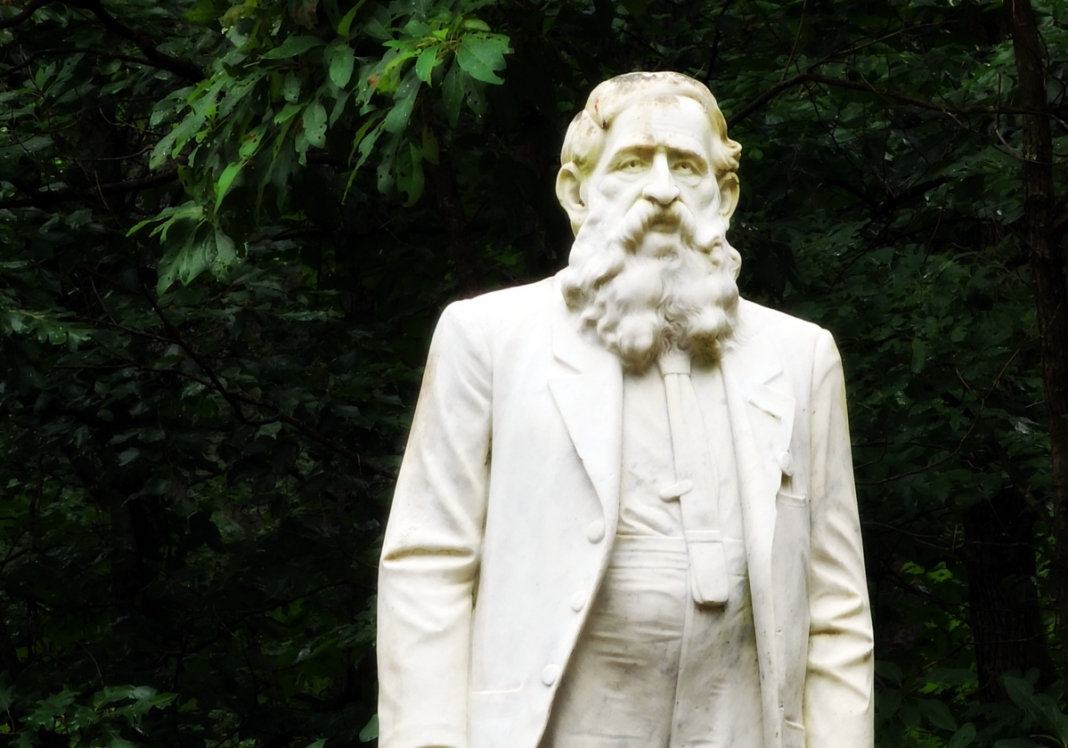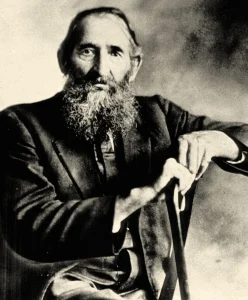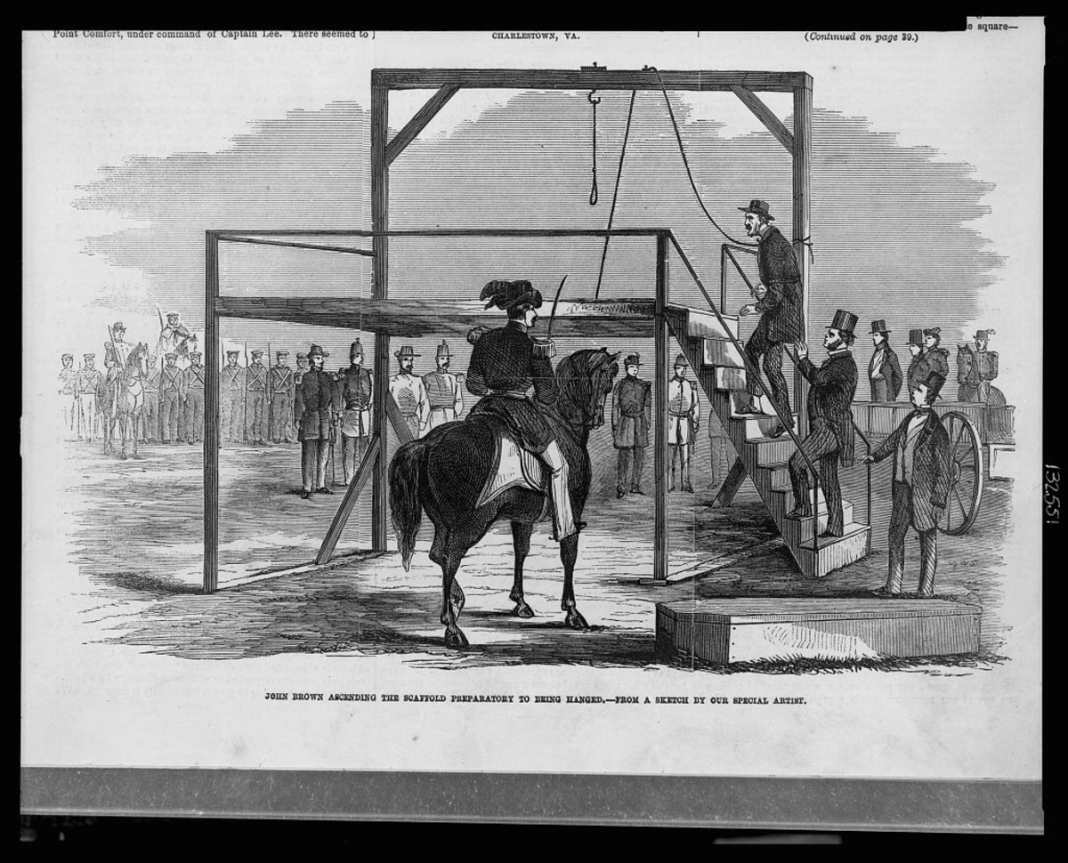LOGAN, W.Va. — By the time the world would come to know him as “Devil Anse,” Anderson Hatfield had already left a significant mark on West Virginia—not for bloodshed or bullets, but for business.
Long before the famous Hatfield-McCoy feud erupted into violence, Hatfield was a man caught between two worlds—the self-reliant, traditionalist Appalachia of his time and the increasingly modernizing, market-driven America.
A legend is born in West Virginia's Tug Valley
“It is ironic,” observes historian Altina Waller, Ph.D., “that the individual who for modern Americans embodies the very essence of traditional mountain culture was, in his own time, a powerful agent for its transformation.”
The author of "Feud: Hatfields, McCoys, and Social Change in Appalachia, 1860-1900," Waller was one of the first scholars to examine the world-renowned Hatfield and McCoy Feud from sources in both the states of Kentucky, the ancestral home of the McCoys, and West Virginia, long the domain of the Hatfields.
Devil Anse Hatfield: From bear-wrestling boy to Civil War guerrilla
Born at Mate Creek in 1839 to Ephraim Hatfield, a respected justice of the peace known as “Big Eaf,” young Anderson—soon to be dubbed “Devil Anse”—grew up in a valley already rich in kinship and lore.
While Ephraim was known for his quiet integrity, young Anse cut a different figure. A precocious youth who reportedly wrestled wild animals, he earned his nickname when his mother declared he was “not afraid of the Devil himself.” Whether or not that tale is true, Waller says, the name stuck.
Even as a boy, Hatfield’s reputation for daring was legendary. But it was the Civil War that first propelled Hatfield into real leadership. After marrying Levicy Chafin in 1861, he joined the Confederate Army, then formed his own militia to protect the Tug Valley. He returned a local hero, his legend firmly cemented—but to a very different Appalachia.
Postwar Appalachia was no longer a frontier of unlimited land and wild game. Its population was growing, tillable land was scarce, and hunting was increasingly restricted by laws passed in far-off capitals. Federal taxes on home-brewed liquor were another thorn in the side of mountaineers.
“The traditional patterns of existence were becoming more and more elusive,” Waller writes. “The external interference caused both hardship and resentment.”
Hatfield’s relationship with tradition was already uneasy. While most sons inherited land from their fathers, young Anse was left out of Big Eaf’s will—a snub that shaped his independence. With few farming prospects, he turned to the one asset the mountains still offered—timber.
Devil Anse Hatfield and the timber boom in Appalachia
He entered the timber business in 1869, forming a company with his brother-in-law despite having limited land and capital. Using borrowed land and credit, Hatfield hired local crews and logged on a full-scale basis.
Hatfield's timber floated downriver in rafts so large they became folk legends. His son, Johnse, even inspired a song: “We’re floatin’ down Big Sandy / A hundred yaller poplar logs / Oh, Lordy, how they ride.”
“Devil Anse Hatfield simply proved to be more energetic and aggressive in the timber business than his neighbors,” says Waller.
Yet his success brought suspicion as Appalachian communities often viewed commercial ambition as a betrayal of local values. “Despite the fact that small-scale timbering was widespread,” Waller notes, “it was feared as risky, speculative, and conducive to dishonesty.”
A timber dispute that reshaped West Virginia land ownership
In 1872, Hatfield sued former friend and rival timberman Perry Cline for $3,000 in damages, claiming Cline illegally cut timber on his land. The suit forced Hatfield to gather powerful allies, including Dr. Elliot Rutherford, whom he later honored by naming a son after him.
The case never went to trial, but the outcome reshaped Tug Valley land ownership. Cline ceded 5,000 acres—his entire inheritance—to settle the dispute. “In a remarkable reversal,” Waller writes, “Perry Cline had been impoverished and driven from the county while Anderson Hatfield emerged as one of the largest landholders and wealthiest men in the Tug Valley.”
Devil Anse Hatfield vs. the Market Economy
Later, Hatfield entered a timber deal with John Smith, a local merchant, trading logs for supplies and credit. However, when the bills came due, Hatfield discovered massive overcharges—sometimes double the agreed-upon rate. Rather than resort to violence, he went to court.
“Contrary to popular images of the wronged mountaineer… Anse did not gather his men together and run Smith out of the valley at gunpoint,” Waller notes. “He confidently filed his complaint.”
Hatfield initially lost and was fined $500. But during a retrial, it emerged that Smith had indeed overbilled him. Hatfield was awarded a modest $350—barely enough to cover legal costs. Yet this episode showed how he was navigating, however uneasily, the modernizing economy of West Virginia.
Reluctant Capitalist: The business mind of Devil Anse Hatfield
Although illiterate and unversed in written contracts, Devil Anse Hatfield continued to push. He mortgaged land, sold tracts to relatives at low rates, and gave property to loyal timber workers to secure their allegiance. “Despite the handicaps of illiteracy and inexperience,” Waller concludes, “he prevailed through sheer will and determination.”
He wore fine boots, owned gold watches, and cut a dashing figure in tailored coats, yet he tried to remain rooted in his Primitive Baptist values. Reputation still mattered. He believed that “individuals… who pursued profit at the expense of friends and neighbors violated implicit community traditions,” Waller writes.
To mountaineers, open ambition was suspect. So was a sense of humor that flouted convention. “I belong to no Church unless you say that I belong to the one great Church of the world,” Hatfield once joked. “If you like, you can say it is the devil’s Church that I belong to.”
Devil Anse Hatfield: A man between two Appalachias
Despite his rising wealth, Hatfield never fully embraced the capitalist identity that might have alienated him from his kin. “He continued to accept community standards of behavior, taking pains to defend his honor and honesty,” Waller says.
His business dealings were challenging but largely within the bounds of the law. His approach—using courts instead of bullets—contradicted the myth of the wild Appalachian outlaw. Hatfield was neither villain nor saint, but something more complex—a man attempting to modernize without betraying his cultural roots.
Appalachia's changing landscape and the spark that ignited the feud
By the late 1870s, Devil Anse Hatfield had become one of the most powerful figures in southern West Virginia. He was a successful timberman, landowner, and patriarch of a growing clan. Yet his success stirred jealousies in a world where equality and honor were communal values, not individual accomplishments.
Resentment simmered. Rivalries lingered. All that was needed was a spark. And that spark came not from contracts, lawsuits, or land. It came from a pig.
Devil Anse Hatfield Homeplace & Museum
For more information on the Hatfield-McCoy Feud, visit the Devil Anse Hatfield Homeplace & Museum near the Hatfield Cemetery at Sarah Ann, West Virginia.
Feud: Hatfields, McCoys, and Social Change in Appalachia, 1860-1900 was published June 1, 1988, by Altina L. Waller. It may be found in libraries throughout the state and is available for purchase online.
Sign up to receive a FREE copy of West Virginia Explorer Magazine in your email weekly. Sign me up!





I am Appalachia native,I often wonder what the ginseng trade played in all of this.It had to be a driving force of the economy...
Very interesting. I was unaware of the background of his business interests.
DAH...was a disgusting treasoness ahole..who supported the rape and torture of an entire race!!!!
A sense of honor and purpose still glows withing us from those days. Union and Confederate Veterans longsince blended to one honorable kindred through the love of family, marriage and children over many decades. This is our pride and honor and it is due in no small part to the preservation of heritage such as this article. Thank you Veteran Clyde Craig. By the way Clyde, my gang used to call Parkersburg "Parkeesbug." Lord knows why!
Insight to many conflicts. My great grandfathers Thompson’s death in 1897 as well. This is a valuable picture of those years in Logan and ( now Mingo) years.